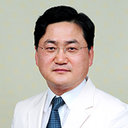Taste perception abnormalities after acute stroke in postmenopausal women.
Nyckelord
Abstrakt
The study aims to elucidate the characteristics of post-stroke taste dysfunction in postmenopausal women. Taste function in 120 consecutive postmenopausal women with acute (<7 days) stroke was compared with that of age-matched control subjects (n=109). The agents used were: sodium chloride for saltiness, sucrose for sweetness, glacial acetic acid for sourness and quinine hemisulfate for bitterness. Detection and recognition thresholds were performed by the three-stimulus drop technique. Taste threshold values beyond two standard deviations of normal were considered "abnormal". For postmenopausal women after acute stroke, abnormal detection thresholds for the ability to taste sweetness, saltiness, sourness and bitterness were found in 33%, 21%, 35% and 30% of women, respectively, and abnormal recognition thresholds were found in 40%, 34%, 42% and 33% of women respectively. The taste dysfunction occurred ipsilaterally, contralaterally or bilaterally, and was not related to the side or location of the lesion. Large (>2 cm) lesions were more frequently associated with sweet and salty taste dysfunction than small lesions (p<0.05). Follow-up examination in 23 patients at 24 to 31 months (mean 27 months) after the initial evaluation showed that the taste abnormality persisted in 8 (35%) patients. Taste perception abnormalities are common and often persistent in stroke patients. The dysfunction can occur ipsilaterally, contralaterally or bilaterally.


